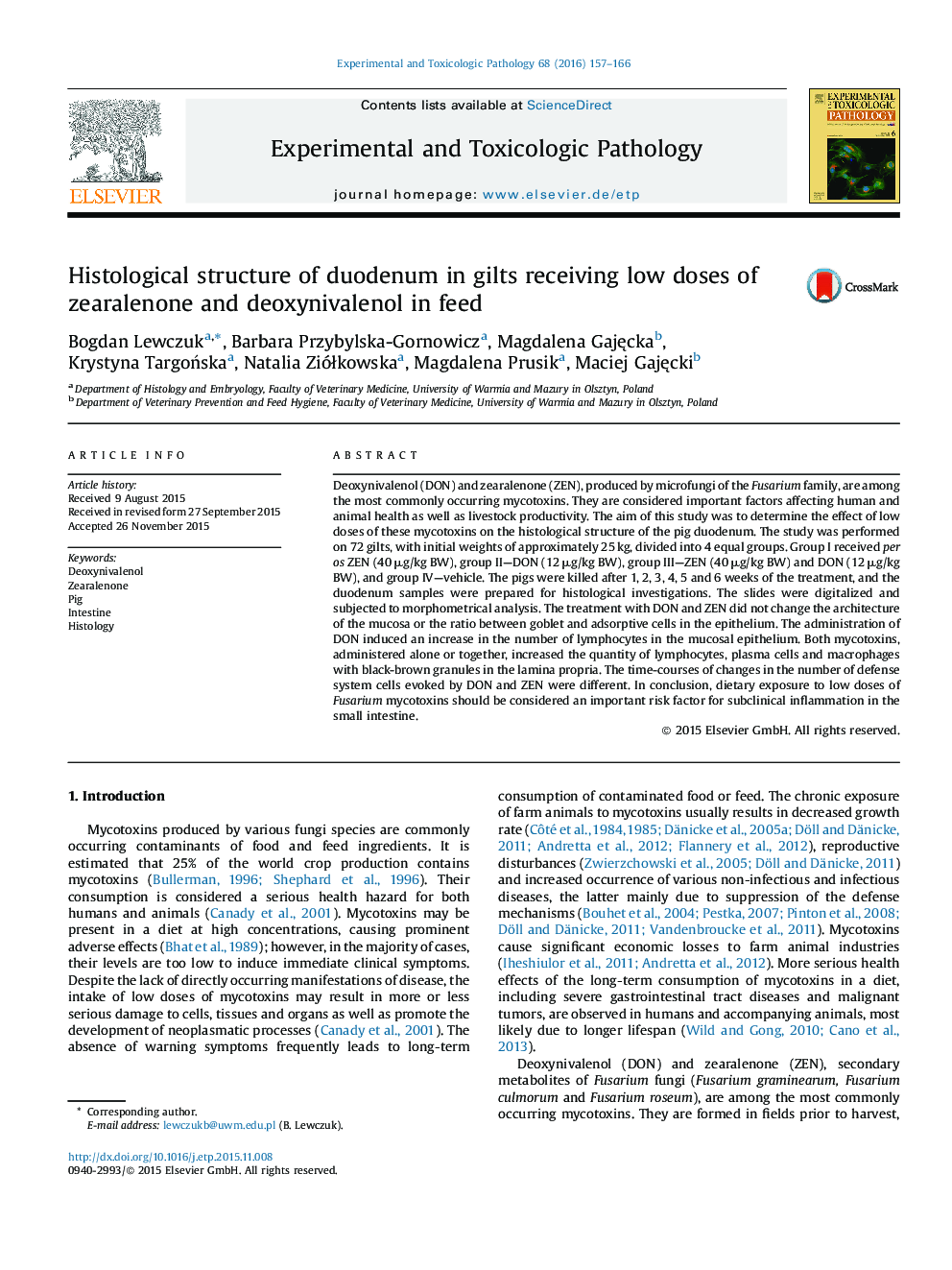| کد مقاله | کد نشریه | سال انتشار | مقاله انگلیسی | نسخه تمام متن |
|---|---|---|---|---|
| 2498798 | 1556832 | 2016 | 10 صفحه PDF | دانلود رایگان |
Deoxynivalenol (DON) and zearalenone (ZEN), produced by microfungi of the Fusarium family, are among the most commonly occurring mycotoxins. They are considered important factors affecting human and animal health as well as livestock productivity. The aim of this study was to determine the effect of low doses of these mycotoxins on the histological structure of the pig duodenum. The study was performed on 72 gilts, with initial weights of approximately 25 kg, divided into 4 equal groups. Group I received per os ZEN (40 μg/kg BW), group II—DON (12 μg/kg BW), group III—ZEN (40 μg/kg BW) and DON (12 μg/kg BW), and group IV—vehicle. The pigs were killed after 1, 2, 3, 4, 5 and 6 weeks of the treatment, and the duodenum samples were prepared for histological investigations. The slides were digitalized and subjected to morphometrical analysis. The treatment with DON and ZEN did not change the architecture of the mucosa or the ratio between goblet and adsorptive cells in the epithelium. The administration of DON induced an increase in the number of lymphocytes in the mucosal epithelium. Both mycotoxins, administered alone or together, increased the quantity of lymphocytes, plasma cells and macrophages with black-brown granules in the lamina propria. The time-courses of changes in the number of defense system cells evoked by DON and ZEN were different. In conclusion, dietary exposure to low doses of Fusarium mycotoxins should be considered an important risk factor for subclinical inflammation in the small intestine.
Journal: Experimental and Toxicologic Pathology - Volume 68, Issues 2–3, February–March 2016, Pages 157–166
